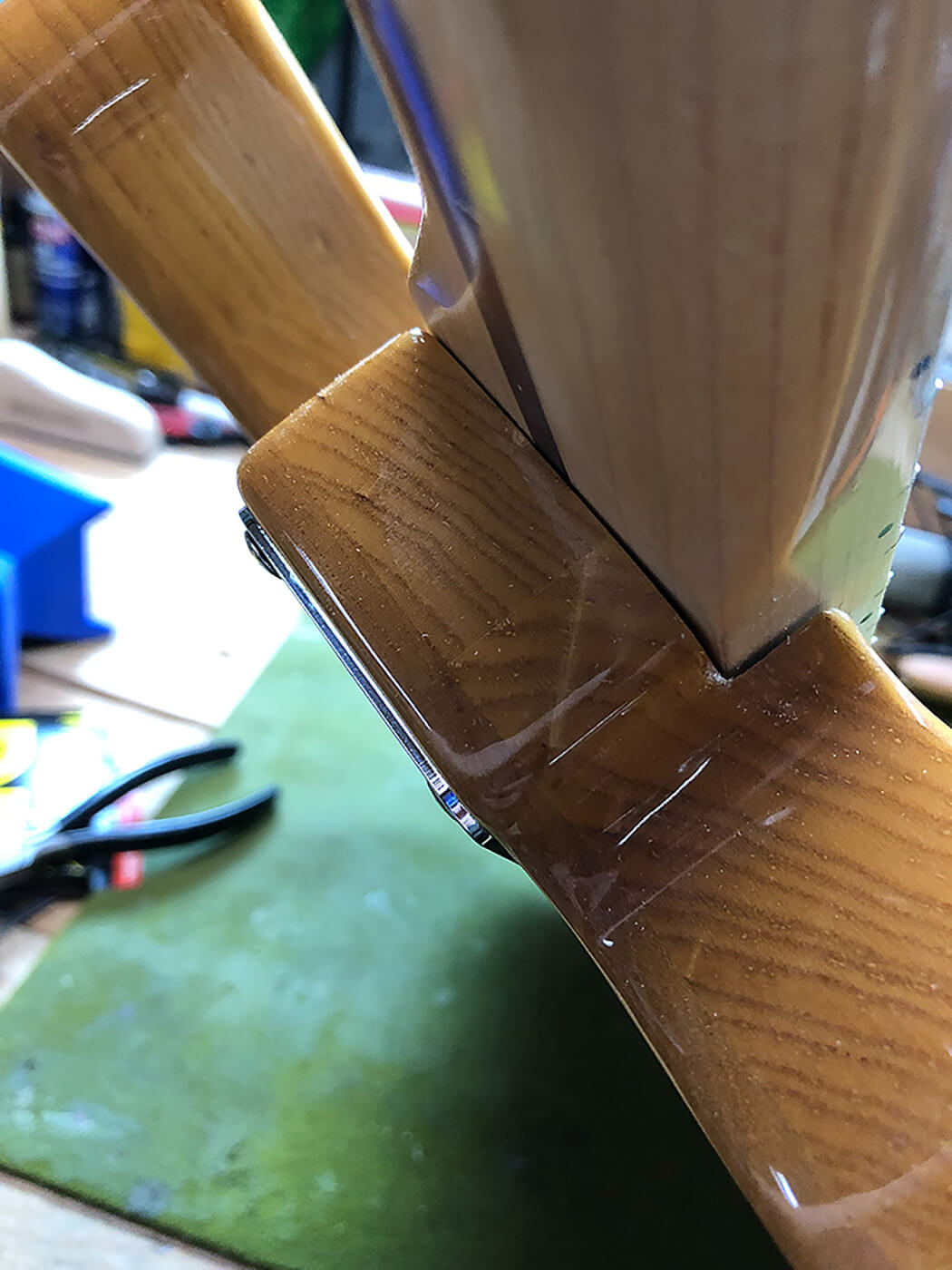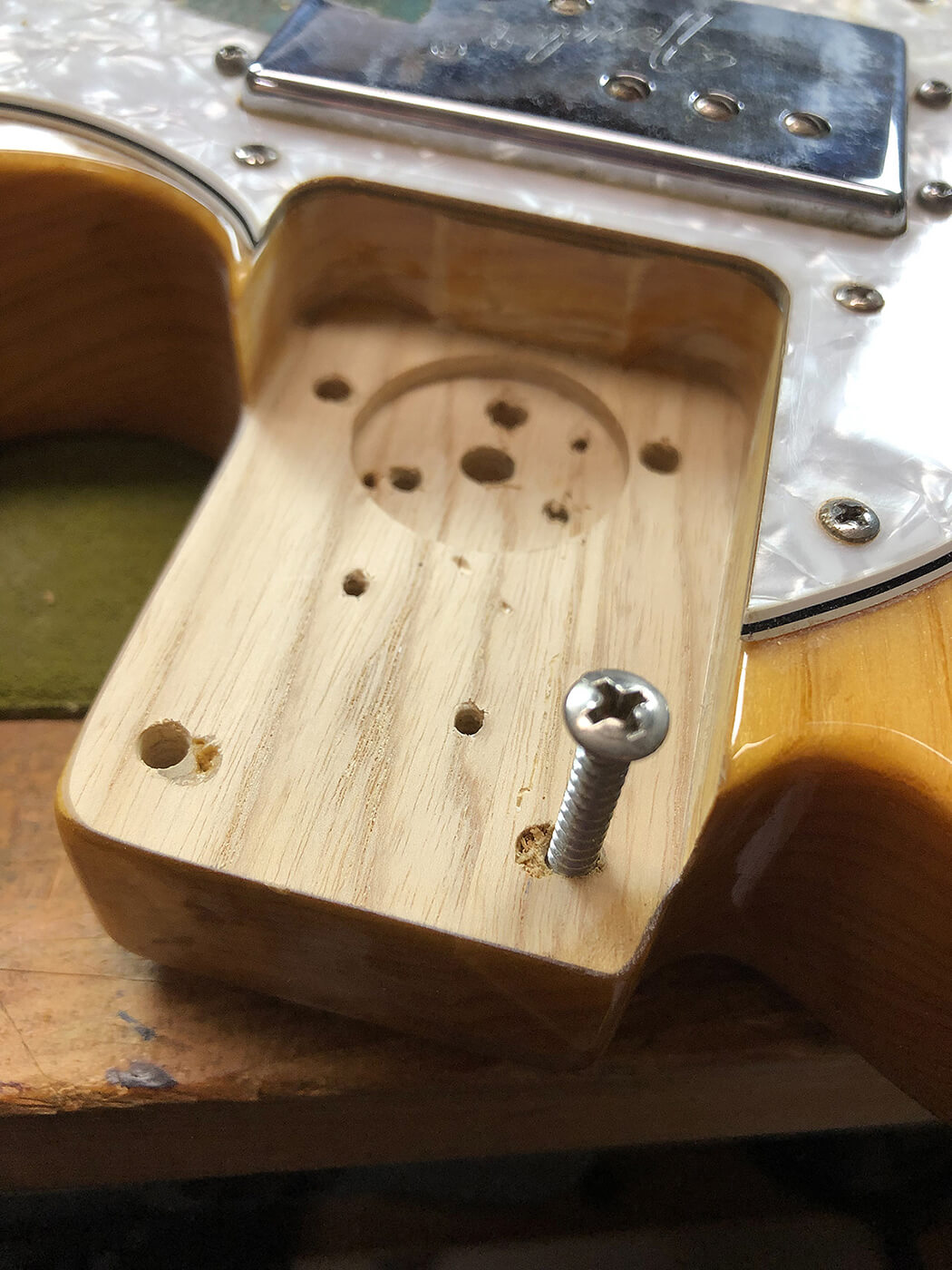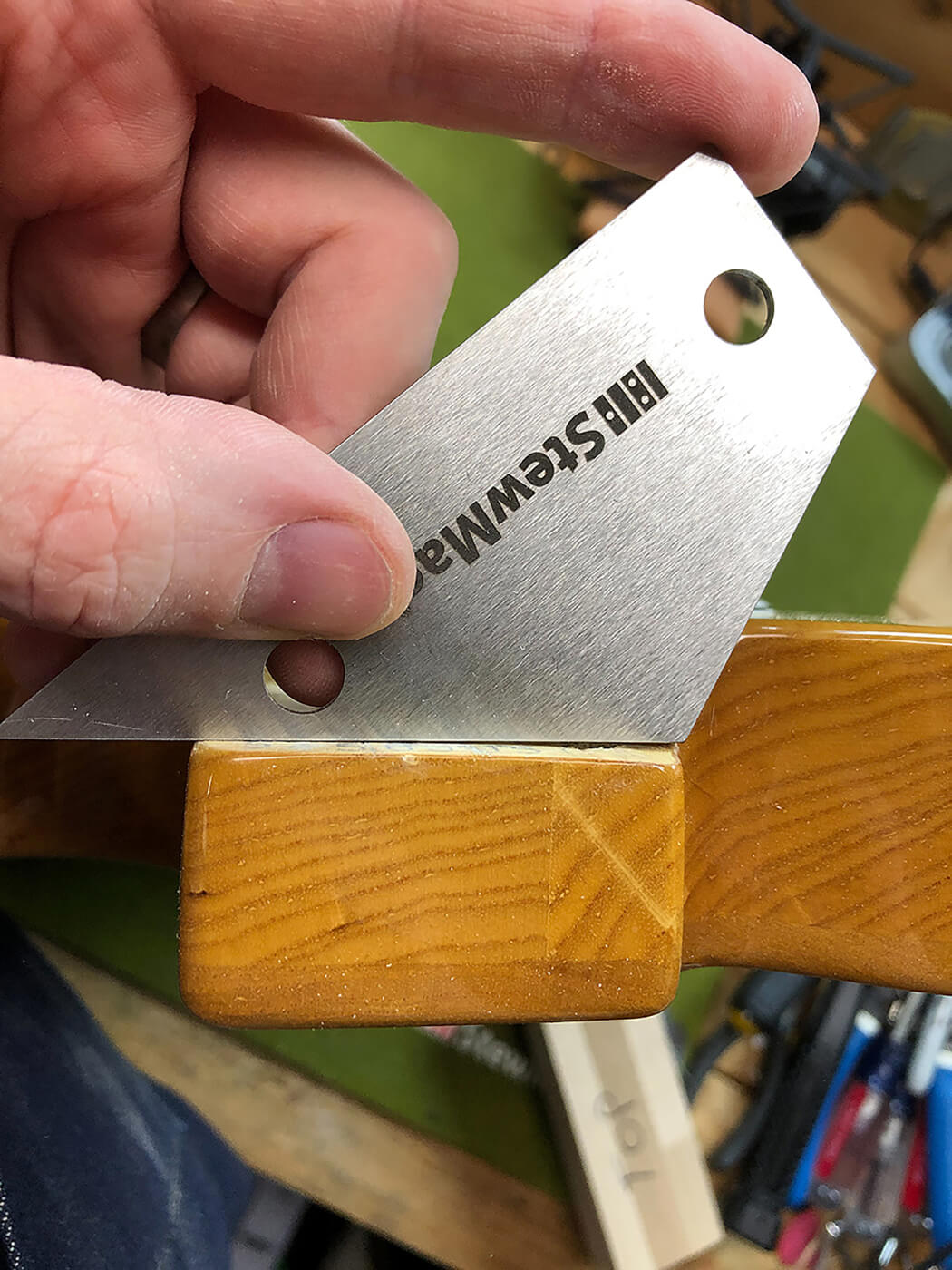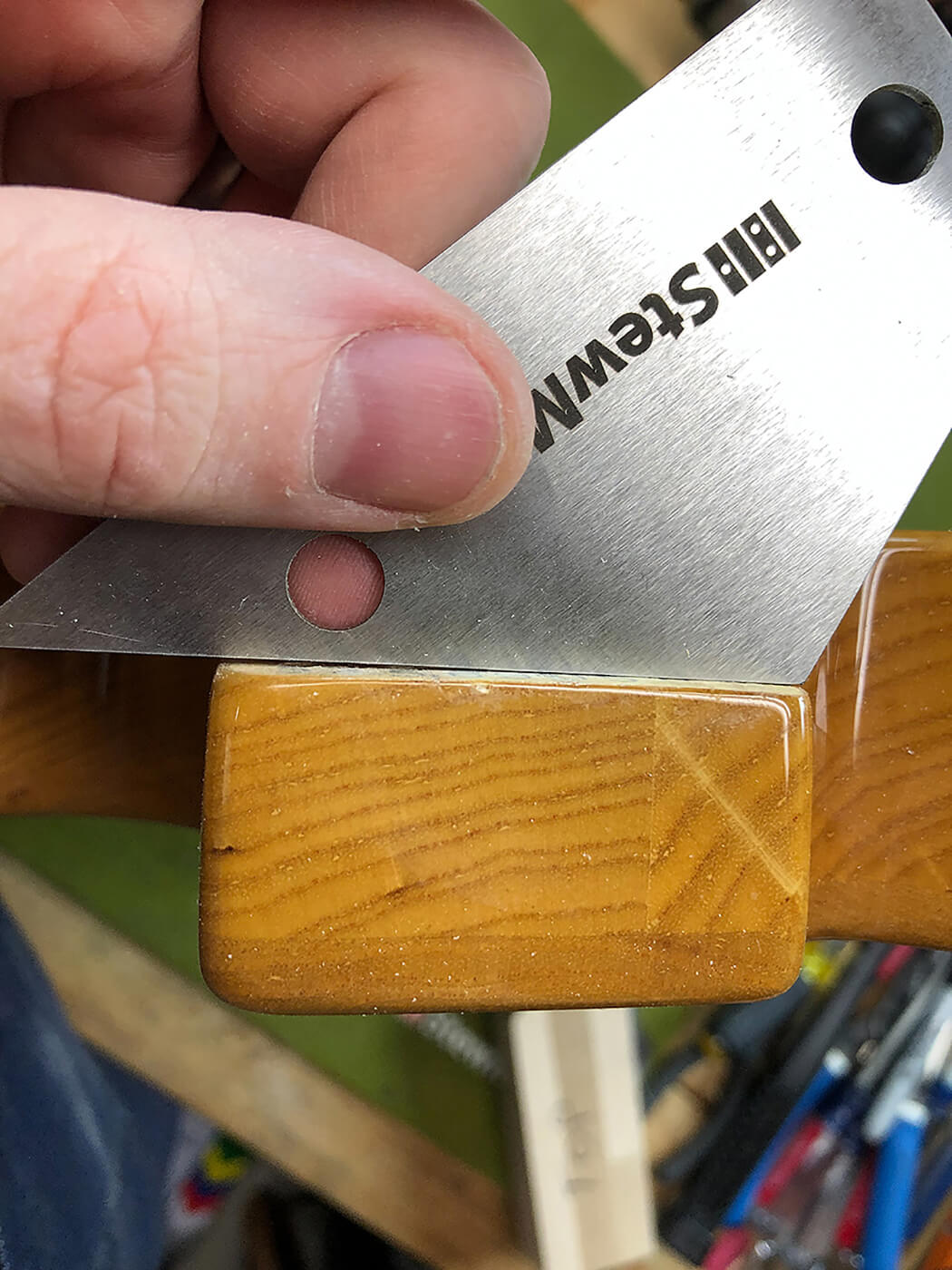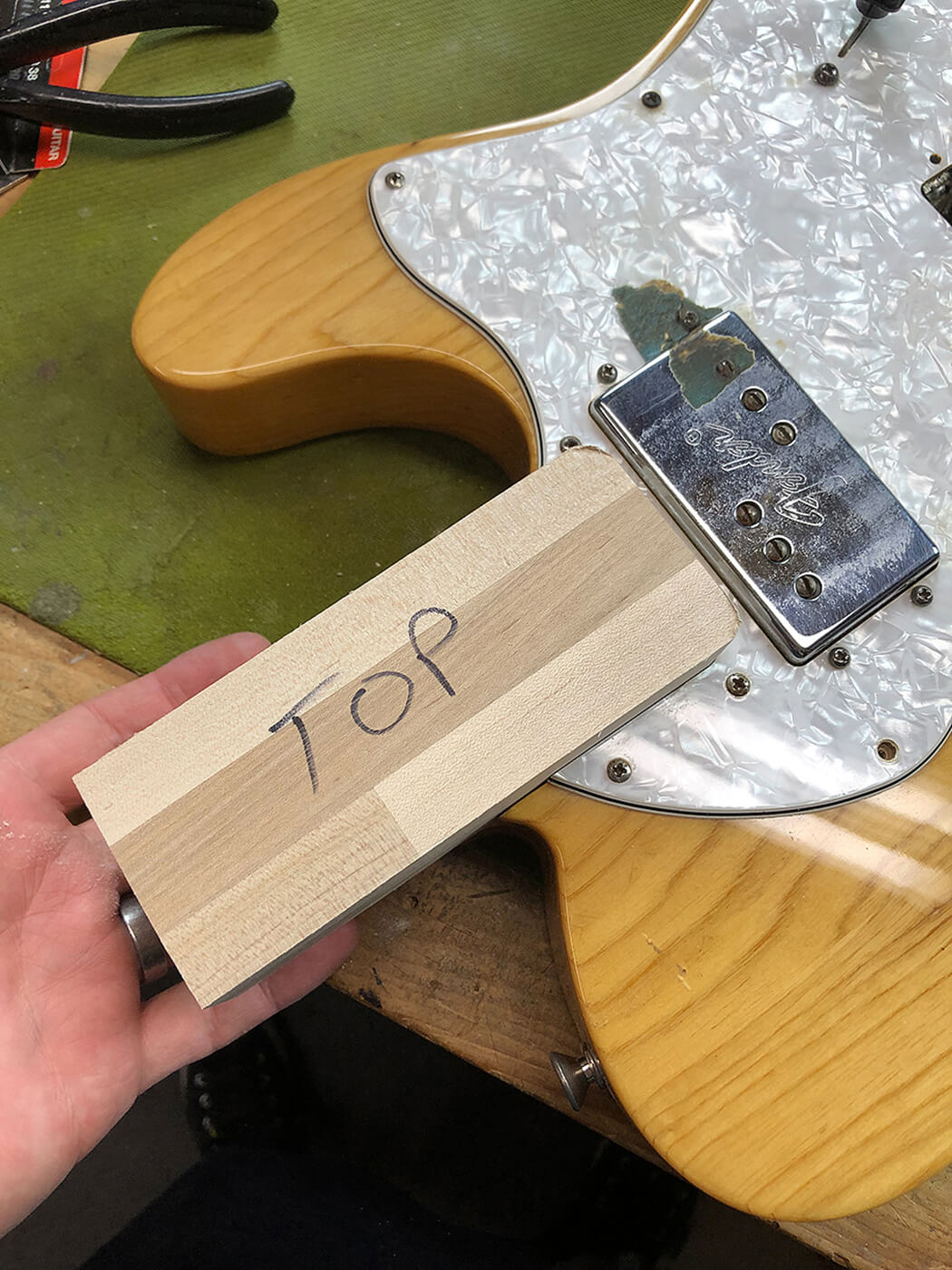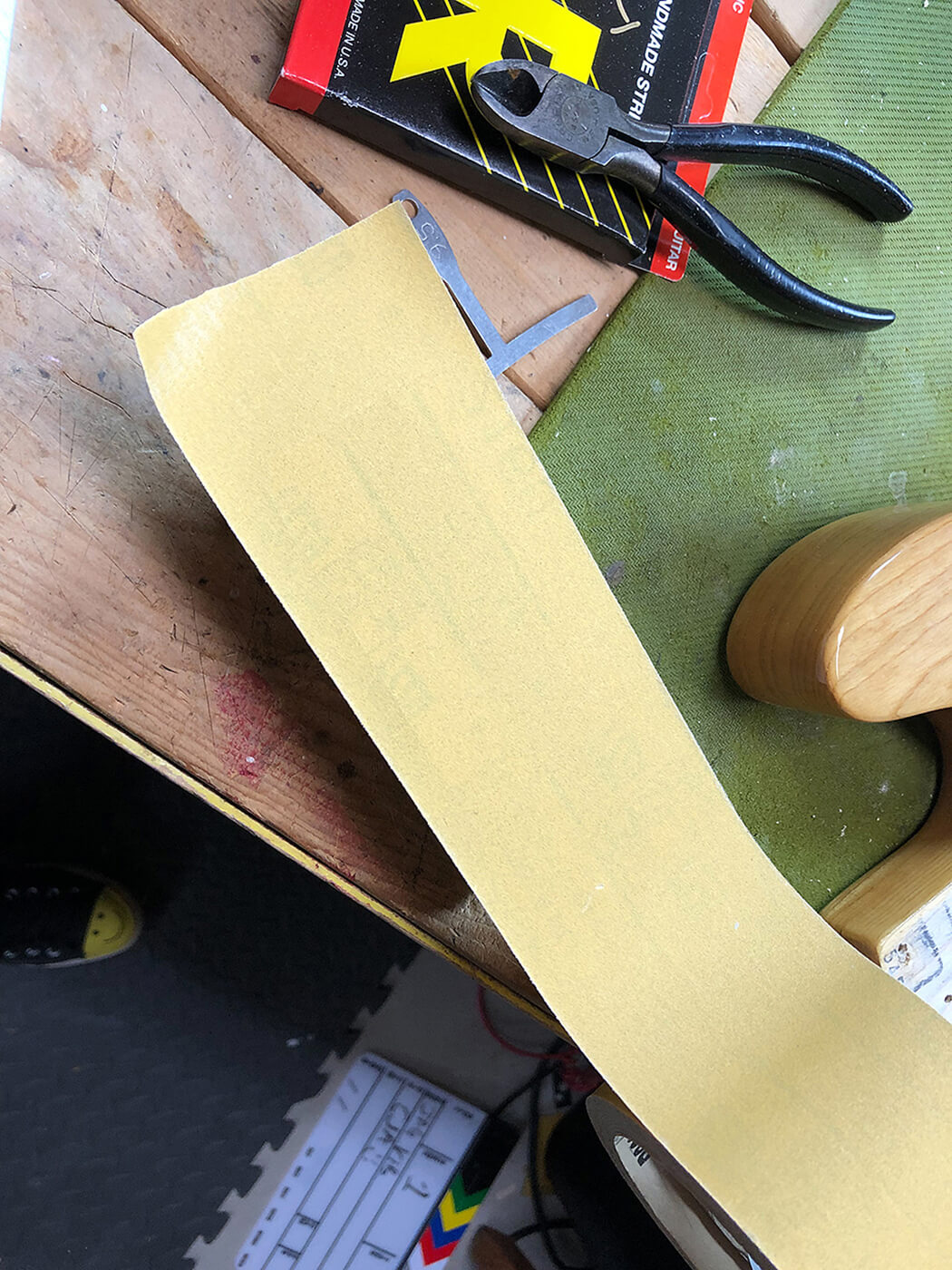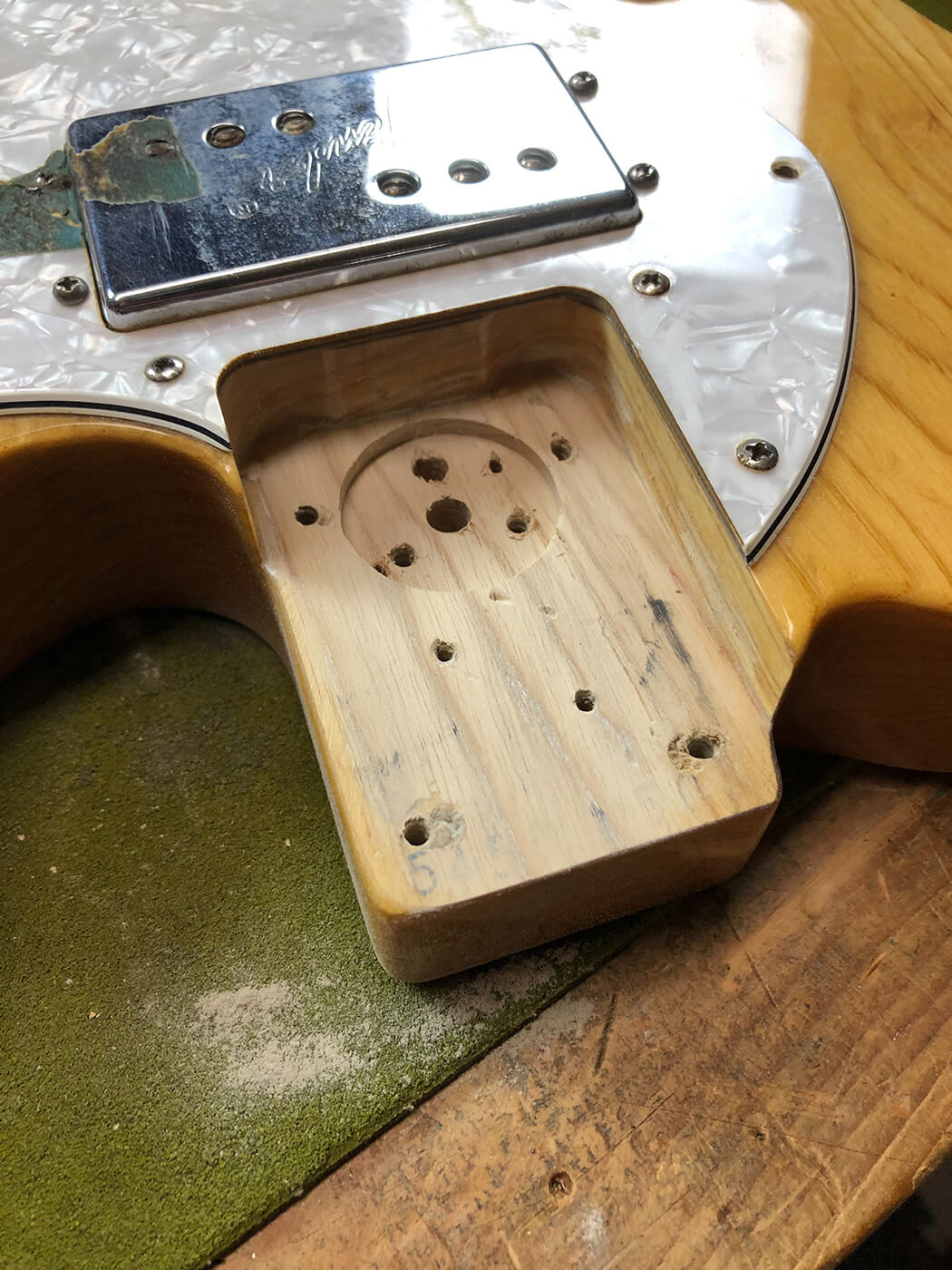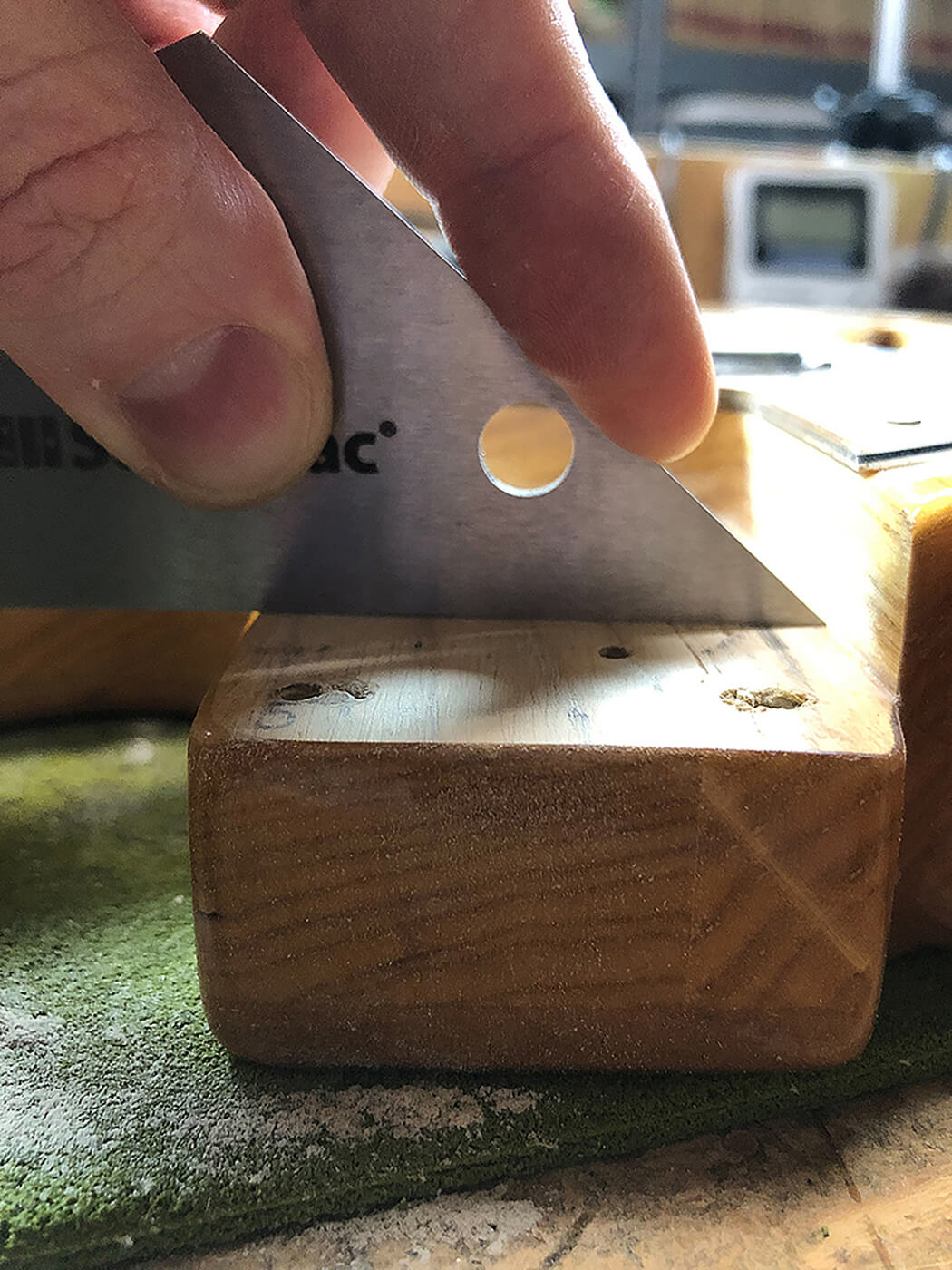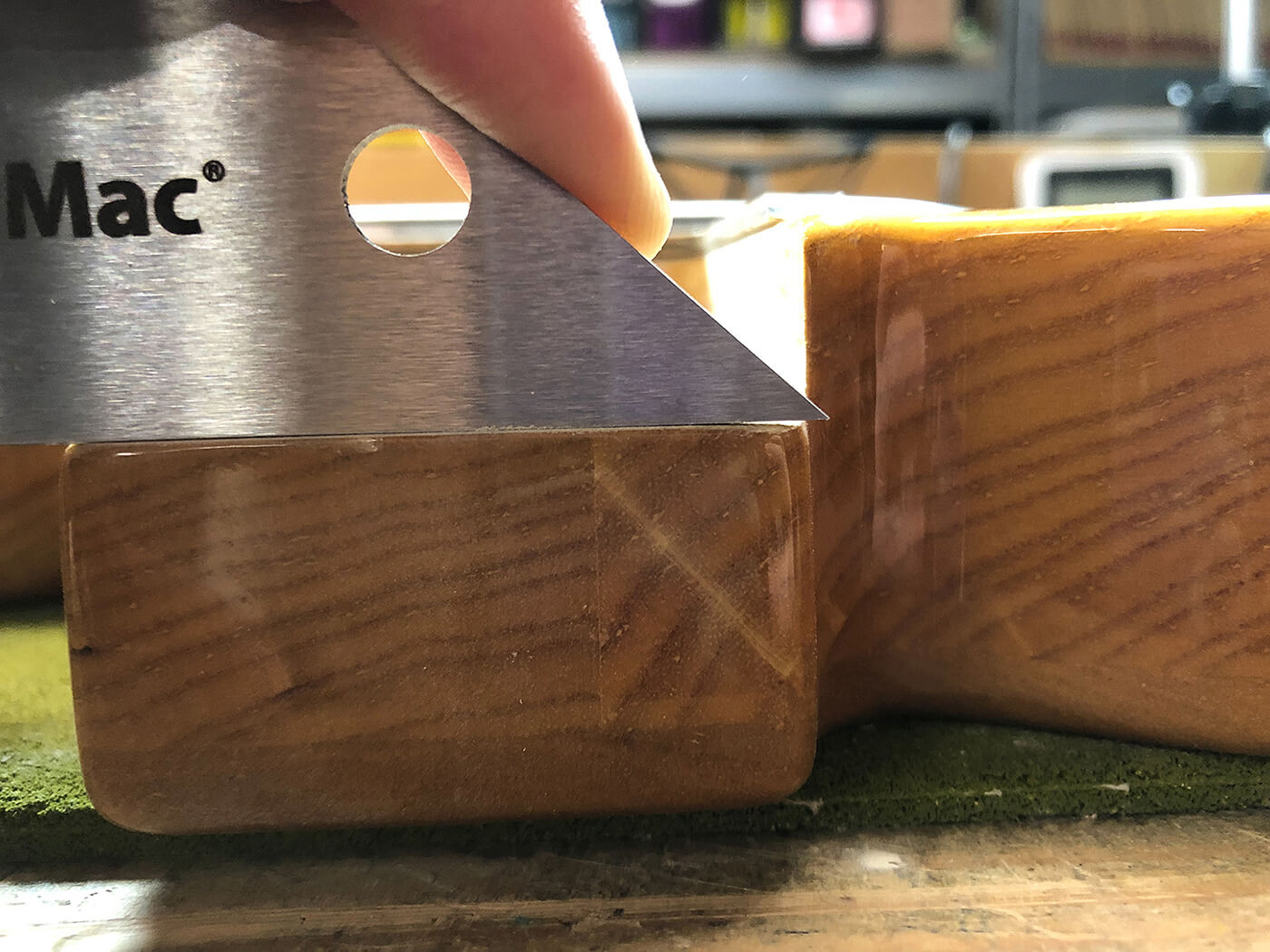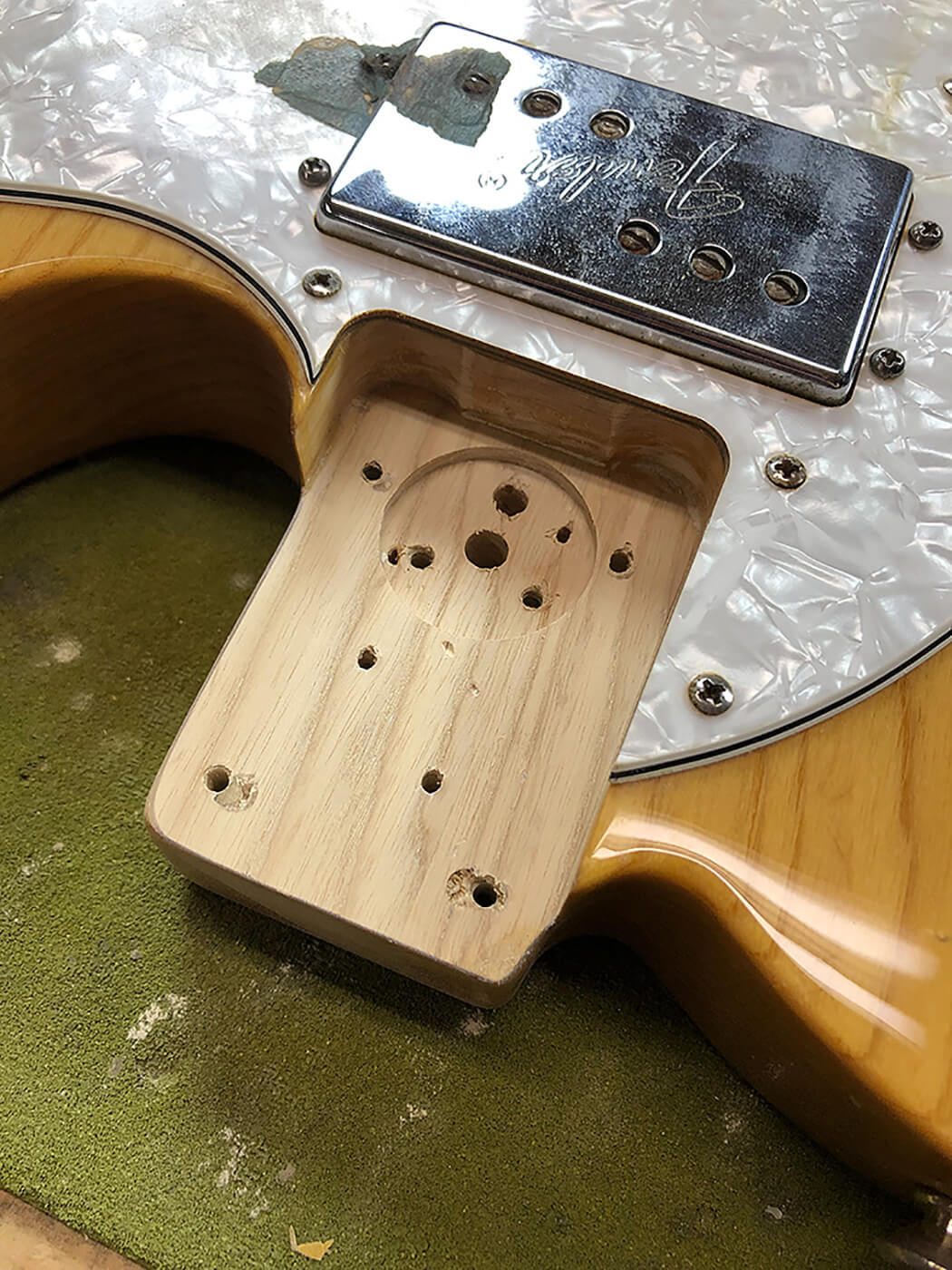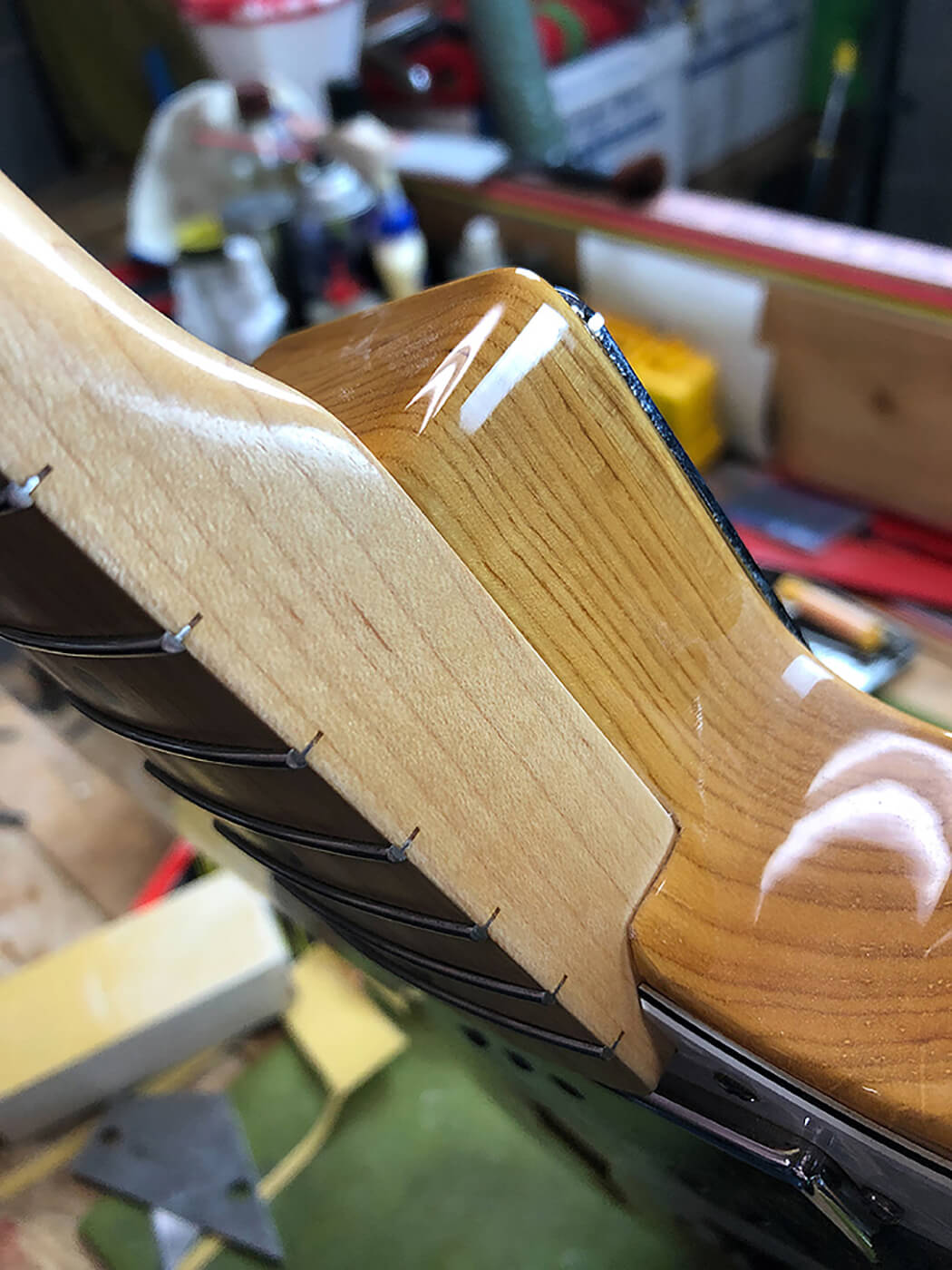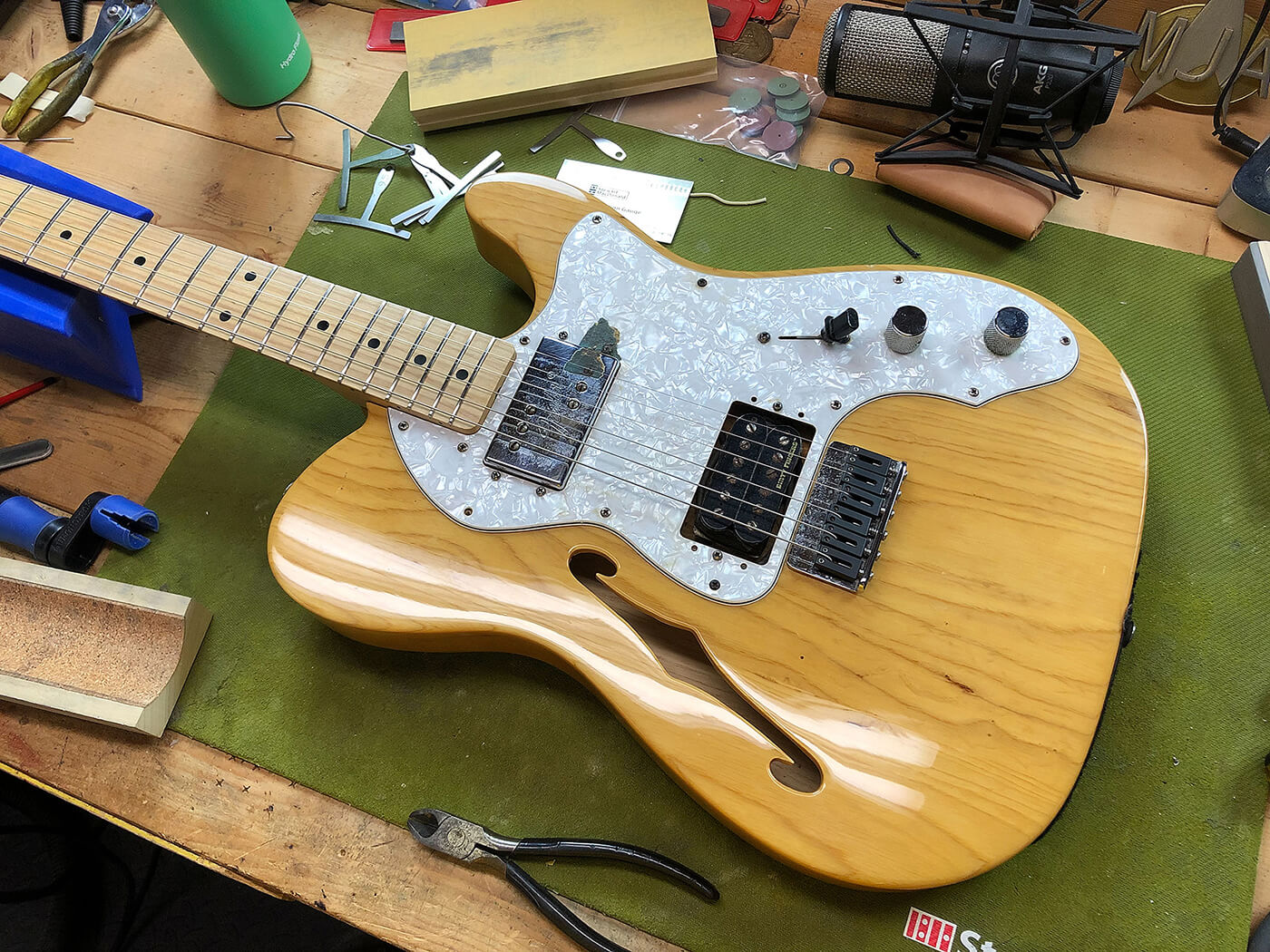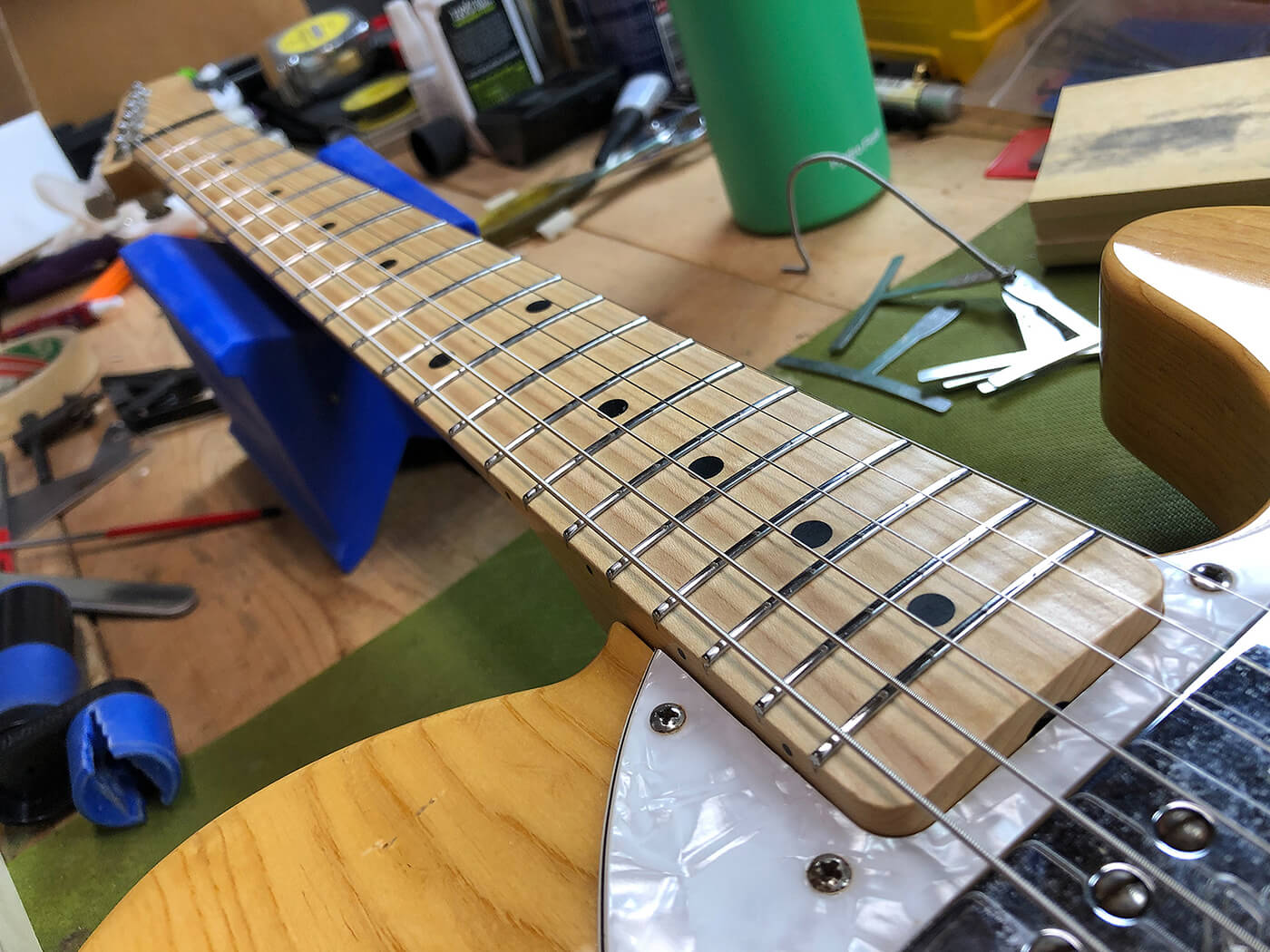Related Tags
Tech Talk: How to level a Telecaster neck pocket
What’s that on Mike’s bench? It’s neither a Jazzmaster nor a Jaguar, and it’s definitely not an offset. This has to be some sort of trick, right?
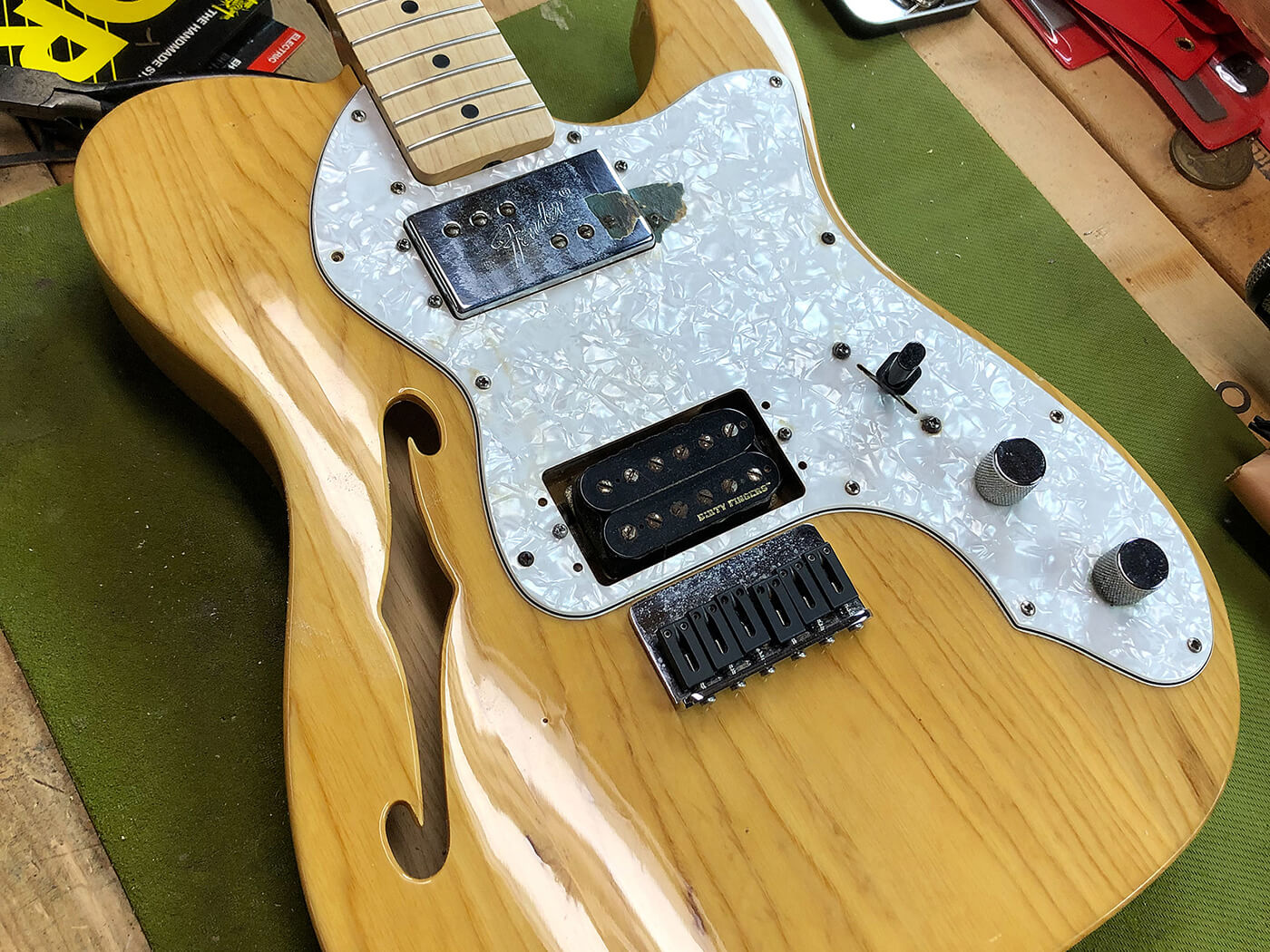
Don’t mind the Dirty Fingers. All images: Michael James Adams
Believe it or not, I do sometimes work on ‘traditional’ instruments, and my good friend Conor’s Thinline Telecaster reissue certainly qualifies… mostly. Conor is one of my favourite guitarists in my area: he’s an incredibly skilled tapper, purveyor of tongue-in-cheek melodic metal, and a fellow treble-hater like myself (we’re big fans of dark-sounding amplifiers).
Conor brought his Tele to me for a basic setup, but once I had a good look at the thing, it turned into much more. Its one-inch thick Warmoth neck had a few playability problems that turned out to be due to the stainless steel frets popping out of their slots, which had to be pressed back into place and re-levelled. That bit was straightforward, but what wasn’t was an issue with the neck pocket.
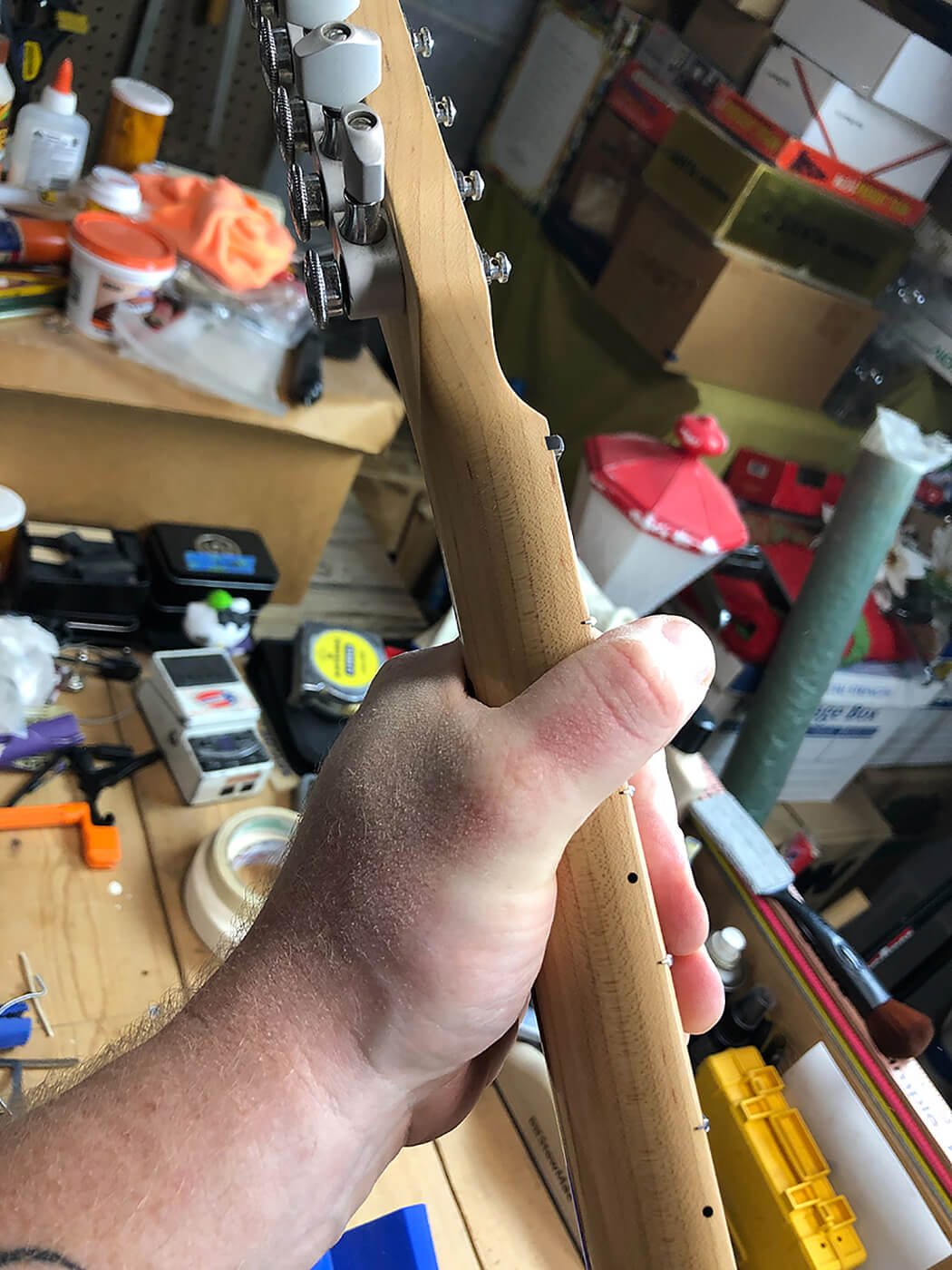
At first glance, the neck didn’t appear to be properly mated to the body, with a gap between the pocket and neck heel that could be seen with the naked eye. So wide was the gap that I could hold a light on one side and see it shining through on the other. This isn’t good for transference or for stability, and a gap like that could cause problems down the road if, say, moisture became trapped there which might cause the neck to warp.
Once I had the neck off, it was clear to me that the main cause of this issue was that the holes drilled for the neck screws were undersized, which allowed the screws to grip the body. Ideally, the screws should pass through the body easily, gripping the neck only; as is, the screws tighten down to the body first, which leaves a gap. The fix here is a simple matter of drilling out those holes to a larger size, but first there’s another problem that needs correcting: the neck pocket itself.
Upon removing the neck, something just did not look right, so I used my StewMac Fret Rocker to check the pocket floor for level. Wouldn’t you know it, it’s not flat at all. Rocking the tool back and forth shows off the curve, and that’s no good for a solid neck-to-body fit.
I can’t say for certain that this neck pocket is 100 per cent the same as it was when left the Fender Mexico factory, as the body had to be altered to accept the four-bolt Warmoth neck it now wears (this model originally had a three-bolt configuration with the Micro Tilt feature).
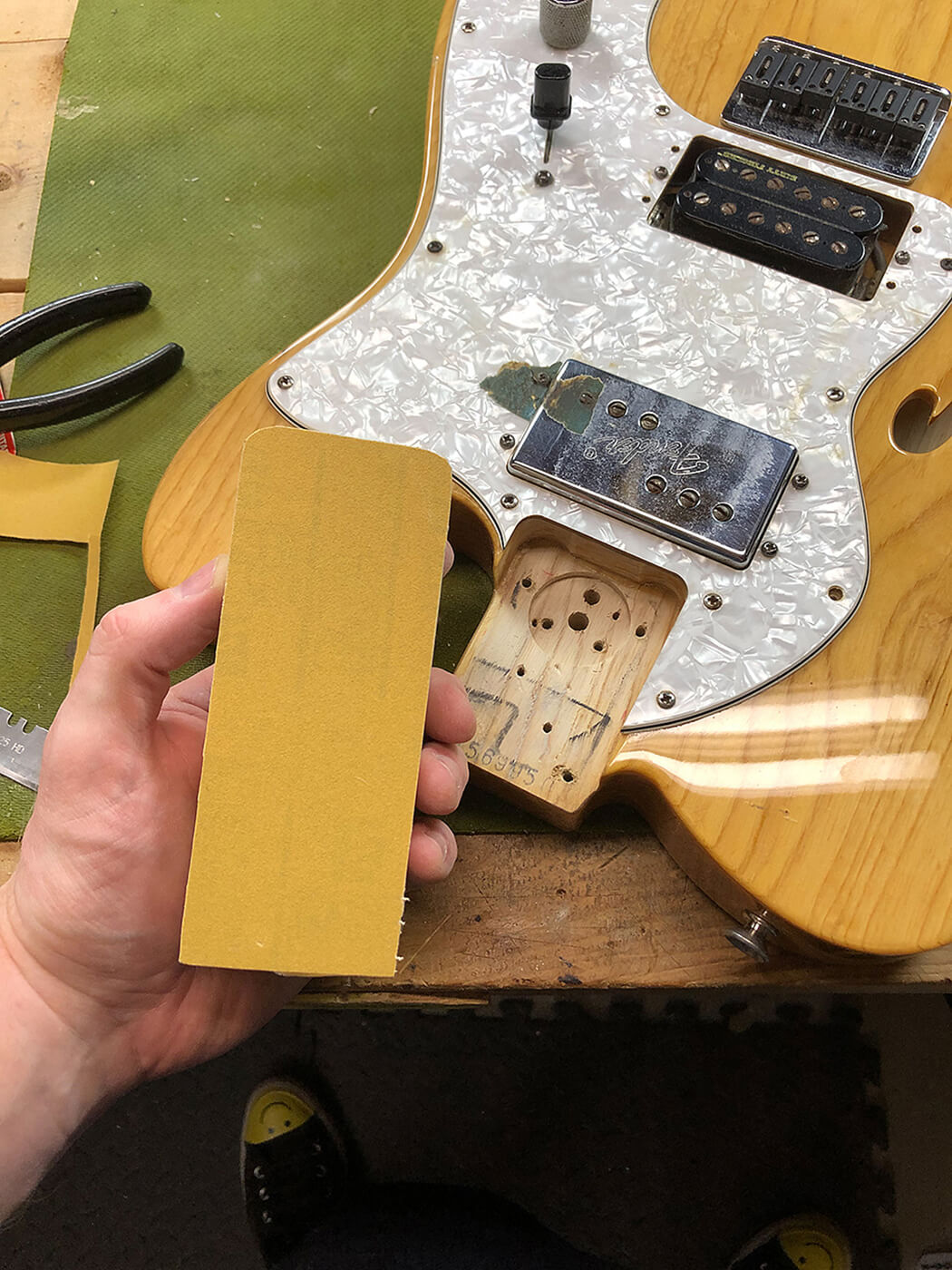
Correcting this means flattening the neck pocket entirely, which took a little more effort and necessitated the creation of what I’ll be calling a ‘Pocket Buddy.’ I fashioned my Pocket Buddy from a block of leftover wood from a previous job. I traced the shape of the Warmoth neck heel onto the wood, then cut out the rough shape using a bandsaw. I brought the wood block down to the correct shape on a belt sander, making sure to flatten out the bottom for a precision surface for the next step.
I then used a strip of wonderful Stikit Gold adhesive sandpaper, 400-grit in this case, to line that surface. The plan here is to use my Pocket Buddy, sized appropriately for the neck pocket, to level out the bottom of the rout to really shore up the fit. I could have used a router, but with the small amount of material to be removed I felt that might be overkill.
I gently sanded away, checking my work with the Fret Rocker and some calipers to ensure a level surface as I went. Getting that pocket flat took about 15 minutes of careful work and left me with a neck pocket that matched the neck perfectly. And sure enough, when I reinstalled the neck it was indeed a tight fit.
One fret level and crown later and this guitar came to life with some Ernie Ball Power Slinkys. Not only does it feel more solid, the guitar is acoustically louder than I remember as well. I think Conor’s going to be pleased – I know I am!
Follow Mike on Instagram @puisheen.

